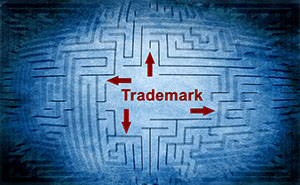Can You “Own” the Color White? The Trademark Board Says “Yes”
Get Legal Help Today
Find the right lawyer for your legal issue.
Secured with SHA-256 Encryption
Mary Martin
Published Legal Expert
Mary Martin has been a legal writer and editor for over 20 years, responsible for ensuring that content is straightforward, correct, and helpful for the consumer. In addition, she worked on writing monthly newsletter columns for media, lawyers, and consumers. Ms. Martin also has experience with internal staff and HR operations. Mary was employed for almost 30 years by the nationwide legal publi...
Published Legal Expert
UPDATED: Jul 16, 2021
It’s all about you. We want to help you make the right legal decisions.
We strive to help you make confident insurance and legal decisions. Finding trusted and reliable insurance quotes and legal advice should be easy. This doesn’t influence our content. Our opinions are our own.
Editorial Guidelines: We are a free online resource for anyone interested in learning more about legal topics and insurance. Our goal is to be an objective, third-party resource for everything legal and insurance related. We update our site regularly, and all content is reviewed by experts.
UPDATED: Jul 16, 2021
It’s all about you. We want to help you make the right legal decisions.
We strive to help you make confident insurance and legal decisions. Finding trusted and reliable insurance quotes and legal advice should be easy. This doesn’t influence our content. Our opinions are our own.
On This Page
 When most people think of trademarks, they probably think about the Nike “swoosh” or the word “Reebok.” But trademarks can be much more than just words and symbols.
When most people think of trademarks, they probably think about the Nike “swoosh” or the word “Reebok.” But trademarks can be much more than just words and symbols.
Trademarks can be shapes — like the shape of the classic Coke bottle.
Trademarks can be sounds, like the roar of the MGM lion or the Microsoft Windows start-up tune. (However, after years of litigation, Harley-Davidson gave up on its attempt to register the sound of its V-Twin engines.)
Trademarks can be smells.
Trademarks can even be colors — in certain contexts.
Protecting Colors
For example, Business Insider notes that trademarked colors include:
- Brown (UPS trucks)
- Magenta (T-Mobile)
- Red (Target)
- Blue (Tiffany boxes)
- Orange (Home Depot)
- Green and Yellow (John Deere)
These companies don’t “own” these colors for all purposes, of course, but they do have the exclusive right to use them in certain contexts, to indicate the source of their products or services.
The issue of whether a color can be a trademark even made its way all the way up to the US Supreme Court, while ruled in the 1995 case of Qualitex Co. v. Jacobson Products Co:
We cannot find in the basic objectives of trademark law any obvious theoretical objection to the use of color alone as a trademark, where that color has attained “secondary meaning” and therefore identifies and distinguishes a particular brand (and thus indicates its “source”).
Gunpowder
In In re Hodgdon Powder Company Inc., Hodgdon applied to register the color white as a trademark for its gunpowder. Specifically, the company wanted to claim white for “preformed gunpowder charges for muzzleloading firearms,” such as muskets.
The company claimed that it had used the color white with its gunpowder for at least the five years before it filed its application.
Gunpowder is normally gray or black. In fact, gunpowder is sometimes called “black powder.”
“Accordingly,” said the judge, “white gunpowder is an anomaly contrary to consumers’ expectations regarding the appearance of the product.”
White Hots
Thus, Hodgdon claimed that the color white served no purpose other than to identify its product. Its packing advertises that its brand WHITE HOTS is “The Only White Gunpowder.”
The Trademark Examining Attorney originally rejected the mark on the grounds that “the evidence does not establish that the relevant public has come to view the proposed mark as a source indicator for the identified goods.”
The Examining Attorney wasn’t impressed by an informal survey the company conducted at a Las Vegas trade show by asking questions like “How many companies make a white gunpowder?” and asking which companies did so. Hodgdon reported that 90% of respondents were able to identify their company as the only source of white gunpowder.
The company took the matter up to the Trademark Trial and Appeal Board (TTAB).
The TTAB concluded that “the color white used in connection with ‘preformed gunpowder charges for muzzleloading firearms’ has acquired distinctiveness” and reversed the refusal to register the mark.
Find the right lawyer for your legal issue.
Secured with SHA-256 Encryption
Mary Martin
Published Legal Expert
Mary Martin has been a legal writer and editor for over 20 years, responsible for ensuring that content is straightforward, correct, and helpful for the consumer. In addition, she worked on writing monthly newsletter columns for media, lawyers, and consumers. Ms. Martin also has experience with internal staff and HR operations. Mary was employed for almost 30 years by the nationwide legal publi...
Published Legal Expert
Editorial Guidelines: We are a free online resource for anyone interested in learning more about legal topics and insurance. Our goal is to be an objective, third-party resource for everything legal and insurance related. We update our site regularly, and all content is reviewed by experts.
